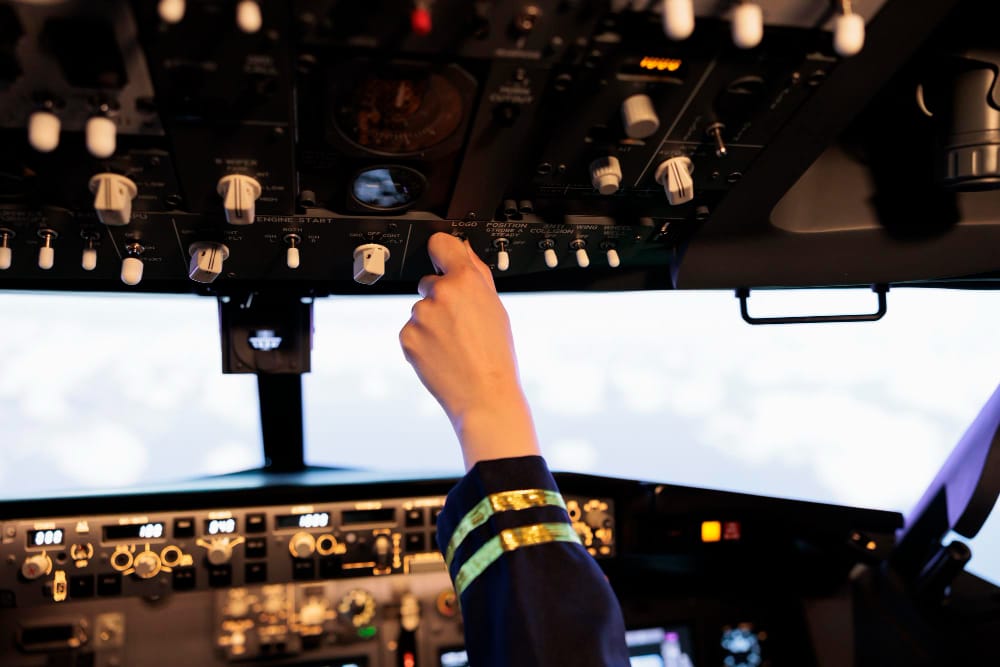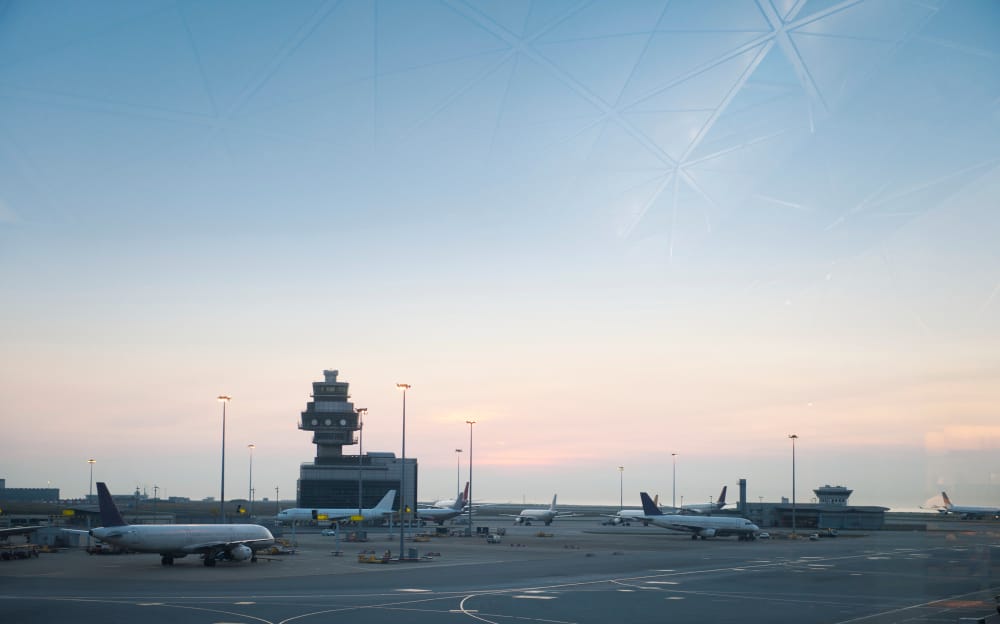Table of contents
ToggleATM Excite is revolutionizing air traffic management (ATM) with its mission to integrate advanced technologies for safer and more efficient skies. As global air traffic increases, the need for innovative surveillance systems becomes critical. Traditional radar-based systems face limitations, especially in remote and oceanic regions. This is where space-based ADS-B (Automatic Dependent Surveillance-Broadcast) steps in. Leveraging satellite-based air traffic surveillance, ATM Excite is spearheading the transition to next-generation ATM systems that ensure seamless, global monitoring, enhancing both flight safety and operational efficiency. This evolution is not just a technological shift; it’s a step toward a smarter, more connected airspace.
Traditional ATM Surveillance Systems
Traditional air traffic management (ATM) systems depend on ground-based radar and surveillance infrastructure to monitor aircraft within line-of-sight coverage areas, typically extending 200-250 nautical miles from radar installations. rimary Surveillance Radar (PSR) systems emit radio wave pulses that reflect off aircraft surfaces to determine range and bearing, while Secondary Surveillance Radar (SSR) interrogates aircraft transponders operating on 1030/1090 MHz frequencies to obtain identification codes, altitude, and enhanced Mode S data including aircraft address and downlink parameters. Ground-based radar systems have served as the foundation of air traffic control for over 70 years, providing surveillance coverage over approximately 30% of the world’s airspace, primarily concentrated over continental landmasses and coastal regions extending roughly 350 kilometres offshore.
However, traditional radar systems face significant limitations in oceanic, polar, and remote airspace regions where approximately 70% of the Earth’s surface lacks any form of real-time aircraft surveillance. This coverage gap became tragically apparent during incidents such as the disappearance of Malaysia Airlines Flight 370 in 2014, highlighting the critical need for global surveillance capabilities that transcend the physical limitations of ground-based infrastructure. As air traffic expands globally, particularly with the rise in unmanned aerial systems (UAS), these systems are struggling to keep up with the demand for comprehensive, real-time monitoring across vast and challenging landscapes. The reliance on ground stations also presents challenges in terms of maintenance and operational costs, making it difficult to provide consistent coverage, especially in underserved areas.
Additionally, the increasing complexity of modern air traffic management poses safety and efficiency challenges for traditional systems. UAS operations, for example, are growing rapidly but are often not detectable by conventional radar, which creates gaps in air traffic surveillance. As a result, traditional ATM systems face growing pressure to evolve and integrate more advanced technologies that can ensure safer, more efficient airspace management for both manned and unmanned aircraft.
Space-Based ADS-B: A game changer
Space-based Automatic Dependent Surveillance-Broadcast (ADS-B) represents a transformative shift in air traffic surveillance. Unlike traditional radar systems, which rely on ground-based infrastructure, space-based ADS-B uses satellites to track aircraft equipped with ADS-B transmitters. This technology enables aircraft to broadcast their position, velocity, and other relevant data to satellites overhead, which then relay the information to air traffic controllers on the ground. This satellite-driven method of surveillance provides continuous, real-time coverage across the globe, including remote and oceanic regions where traditional radar systems are ineffective.
One of the key advantages of space-based ADS-B is its ability to overcome the geographic limitations of traditional ATM systems. Ground-based radar can only monitor aircraft within the range of the radar stations, leaving vast areas, such as oceans or uninhabited regions, without coverage. In contrast, space-based ADS-B offers seamless global coverage, ensuring that air traffic control (ATC) can track aircraft anywhere in the world, even in the most remote areas.
Space-based ADS-B brings numerous benefits to air traffic management. Space-based ADS-B enhances operational efficiency by delivering aircraft position reports every 1-2 seconds globally, compared to traditional oceanic position reporting intervals of 15-30 minutes, thereby reducing search areas from 55,000 square kilometers to approximately 4 square kilometers in emergency situations. The technology significantly improves safety by enabling air traffic controllers to maintain radar-like surveillance in oceanic and remote airspace, supporting reduced separation minima from 80 nautical miles to 30 nautical miles or potentially lower, while providing early warning capabilities for aircraft deviations and enhanced emergency response coordination.
When compared to traditional radar systems, space-based ADS-B is both cost-effective and scalable. Maintaining radar infrastructure can be expensive, especially for remote areas, whereas satellite surveillance requires fewer ground installations and can be easily expanded to accommodate growing air traffic demands. This scalability and reduced maintenance cost make space-based ADS-B a crucial step toward next-generation air traffic management.

Benefits of satellite surveillance in ATM
Satellite surveillance serves as a cornerstone technology for next-generation ATM systems, addressing critical capacity and safety challenges as global air traffic continues its projected growth of 4-5% annually while integrating new airspace users including unmanned aerial systems and advanced air mobility vehicles.
With over 873,000 registered unmanned aircraft systems in the United States alone as of 2021 and rapidly expanding commercial drone operations requiring beyond visual line of sight capabilities, satellite-based surveillance technologies provide scalable solutions for monitoring and managing mixed traffic flows across all altitude levels and geographical regions.
Seamless integration across civil and military sectors
With over 873,000 registered unmanned aircraft systems in the United States alone as of 2021 and rapidly expanding commercial drone operations requiring beyond visual line of sight capabilities, satellite-based surveillance technologies provide scalable solutions for monitoring and managing mixed traffic flows across all altitude levels and geographical regions.
Traditional ground-based radar systems typically operate as separate civil and military networks with limited real-time data sharing capabilities, creating coordination challenges particularly during periods of high traffic density or when military training exercises require rapid airspace reallocation. Space-based ADS-B systems enable unified surveillance coverage that supports real-time data sharing between civil Air Navigation Service Providers and military authorities, facilitating collaborative decision-making processes and reducing the potential for airspace conflicts during simultaneous operations.
This integrated surveillance approach proves essential for optimising Europe’s finite airspace resources, where military operations account for over 150,000 flights annually alongside 7 million commercial flights, requiring sophisticated coordination to balance national security requirements with civil aviation efficiency.
Real-Time monitoring and global coverage
Satellite surveillance ensures continuous, real-time monitoring of aircraft across the globe, overcoming the limitations of traditional ground-based radar systems. This global coverage is especially crucial for tracking flights in remote or oceanic regions, where conventional radar systems struggle. With space-based ADS-B, air traffic controllers can monitor aircraft in real-time, ensuring constant situational awareness and enhancing safety by identifying potential risks earlier.
Improved airspace management and increased efficiency
As air traffic increases, the complexities of managing flights, including drones and unmanned vehicles, also rise. Satellite surveillance allows for more efficient management of both manned and unmanned aircraft, providing comprehensive data on location, altitude, and speed. This improved visibility enables air traffic control systems to optimize flight paths, reduce congestion, and prevent collisions.
Practical applications: SESAR and Public-Private partnerships
European initiatives, like SESAR (Single European Sky ATM Research), exemplify the successful integration of satellite surveillance into modern ATM systems. SESAR aims to modernize Europe’s air traffic management by implementing advanced satellite technology, enabling more efficient and sustainable airspace usage.
Public-private partnerships, such as those between governments and commercial satellite companies, are further accelerating the development of satellite-based air traffic control systems, proving the value of space-based surveillance in the next-gen ATM landscape. These initiatives not only improve airspace safety but also pave the way for innovative, scalable solutions to manage the growing complexity of global air traffic.
The future of Air Traffic Management: Next-gen systems
Satellite systems are at the core of developing next-gen air traffic management (ATM), revolutionizing the way we monitor and control airspace. By providing global coverage, space-based ADS-B enables real-time tracking of aircraft across both remote and densely trafficked regions. As technology evolves, AI, machine learning, and big data analytics are set to further enhance satellite surveillance, creating smarter, more efficient ATM solutions. These technologies can analyze vast amounts of data, predicting traffic patterns, optimizing flight routes, and minimizing delays.
Future innovations in ATM include dynamic airspace allocation, where airspace is allocated based on real-time demand, improving traffic flow. Integrated traffic management systems will allow seamless coordination between civil and military airspace, reducing conflicts and enhancing safety. With the power of satellite systems combined with advanced analytics, the future of air traffic control promises a more streamlined, coordinated, and efficient global airspace.
Is ground radar still necessary in the age of satellites?
Despite the advancements in satellite surveillance, ground-based radar remains relevant in the modern air traffic control (ATC) ecosystem. Both technologies have unique strengths and complement each other to ensure optimal airspace management.
Satellite surveillance offers global coverage, making it ideal for monitoring remote and oceanic areas, where ground radar is ineffective. It provides real-time data and enables seamless tracking of both manned and unmanned aircraft. However, satellite systems can have limitations in high-density airspaces and in specific weather conditions, such as heavy rain or dense clouds, which can interfere with signal transmission.
Ground radar, on the other hand, remains highly effective in areas with complex air traffic, such as major airports or high-density regions, where precise, localized tracking is critical. It also provides a backup in situations where satellite coverage may be unreliable, ensuring continuous monitoring.
In the future, while satellite surveillance will dominate, ground radar will continue to play a role in areas requiring highly precise tracking, specific operational needs, or where environmental factors pose challenges to satellite systems. Together, these technologies create a more resilient and efficient air traffic management framework.

ATM Excite: Leading the way in Next-Gen Air Traffic Management
Space-based ADS-B is revolutionizing air traffic management (ATM), providing global coverage, real-time data, and enhanced safety, all critical for next-gen ATM systems. This technology overcomes the limitations of traditional radar by offering continuous surveillance, even in remote areas. With the rise of drones and unmanned vehicles, satellite systems ensure smarter, more efficient airspace management.
ATM Excite is at the forefront of these innovations, driving the integration of space-based technologies to create a safer, more efficient airspace. As we move toward the future of aviation, ATM Excite’s contributions will play a key role in shaping the skies of tomorrow.
Want to know more about what we do at ATM Excite? Contact us and we can answer any questions you may have.






